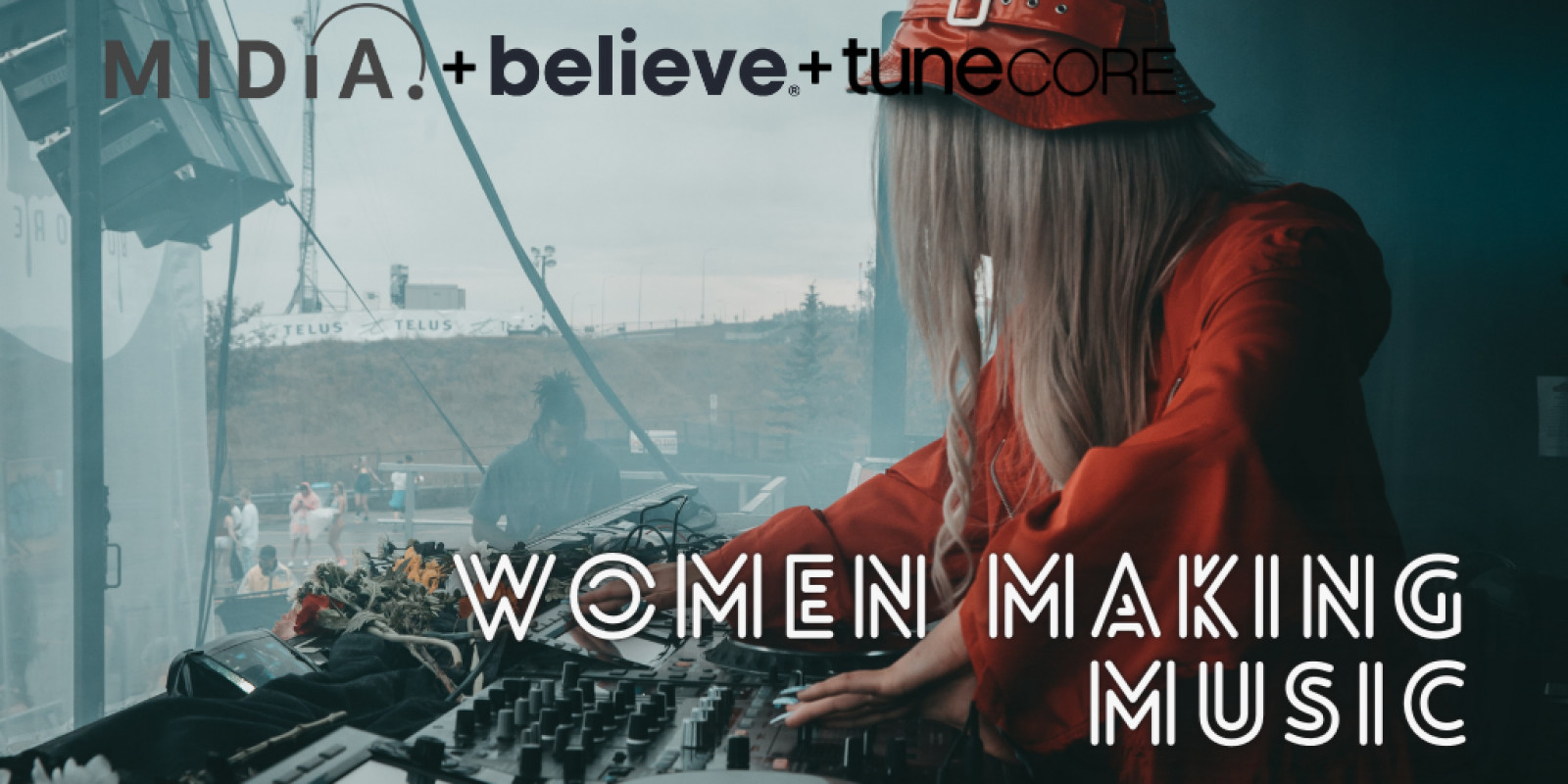Women making music


Even taking into account the impact of the pandemic, it has never been a better time for independent creators in the music business. The various 2020 lockdowns may have prevented artists from earning vital touring income and disrupted release and promotion cycles, but for many it also pushed new creativity, with nearly 70% of independent artists choosing to use the time to write or make new music.
Yet, with access to the industry easier than ever, a glaring discrepancy remains: why are there still so few women, and so many men? What is stopping female creators – artists, songwriters, producers and DJs from picking up an instrument or learning the software, and releasing music into the market? Despite women occupying leadership positions and topping the charts, women overall remain starkly in the minority and remain massively unrepresented in the music industry. Why?
2020 has been a year of change, some of it very much positive, including months of protests within the Black Live Matter movement, driving global conversations and pushing for diversity, equity, and ‘minority’ recognition. The demand to recognise that more is needed from governments, businesses, and institutions, for a universal recognition of discrepancy in opportunity and lived experience, has forced changes in practise and behaviours – and hopefully attitudes too. While many want to forget 2020, it was the year that moved the global mindset forward unilaterally.
The challenges women and others face in the music industry (and beyond) are deep, varied and unrelenting – some obvious and now exposed (in part through #metoo), but many either subtle or deniable enough to have escaped accountability for decades, if not centuries. #metoo shone the spotlight on harassment and assault, often by men in positions of power. Yet discrimination and bias can also be as simple as girls experiencing discouragement from participating in “male” activities in schools, like technology, or from playing ‘male’ instruments likes drums and guitar.
It’s well known that women creators in the music industry (and other sectors too) must work harder to achieve the same approval or reward as their male counterparts. They are sometimes treated with an air of dismissal, or are not as initially respected, or suffer expectations of childcare/parenthood as a burden or skill proclivity based on gender.
Much has been done over the past few years to address a myriad of these issues in music by the likes of Women In Live Music (WILM), Women In CTRL, Pass the Aux and more. The F-List female creator database has removed the excuse that there simply “aren’t enough women in music to hire”. Female-centric projects like Rhythm Sister, She Is the Music and SheShreds are working to develop, provide resources for and spotlight female artists that both inspire and empower the journeys of more women and other minorities into music. The Annenberg Study highlighted shocking statistics, finding that only one-in-five of artists are female, but worse: only 12.3% of songwriters and 2.1% of producers are(2012-2018). While men and women of colour have climbed ladders, and female representation in the ‘big leagues’ is rising, behind the scenes it remains to be seen how much has really changed.
Featured Report
Music catalogue market 2.0 Bringing yesterday’s hits into the business of tomorrow
The music catalogue acquisition market bounced back from a slightly cooled 2023 with a new fever in 2024. What is being bought is changing, however, as investors look to diversify their portfolios and uncover new growth pockets in an increasingly crowded market.
Find out more…No in-depth work has recently consulted the global community of female creators. This, too, is changing. MIDiA has long focused on the path of the independent artist, and in conjunction with Tunecore and Believe Digital we are now conducting a comprehensive global study asking creators themselves about their challenges, inspirations and experiences.
Through this we can discover the main issues they face, what is helping them along their journeys – or holding them back. We can point to solutions that can bring the industry forward. Let’s find out what we need from those working in the weeds of the industry today and those looking to carve out a living from music – whether independent, signed, solo or part of a band.
Due to the very issue of representation, we welcome people of all genders to take part, but it is imperative to hear as many female/femme experiences as possible. The more respondents, the better a picture we can uncover. These findings will be published in full, in a free report in March – International Women’s month.
Survey here: https://www.surveymonkey.co.uk/r/ZZ8YFBL
Please also get in touch with hanna@midiaresearch.com or keith@midiaresearch.com if you would like to contribute to the study or discuss this research.

The discussion around this post has not yet got started, be the first to add an opinion.